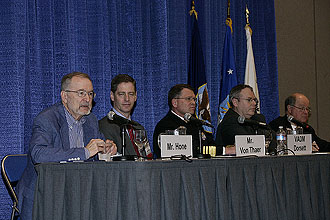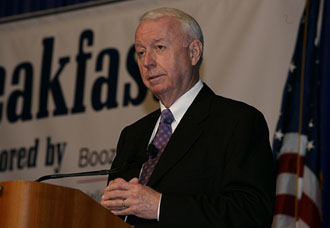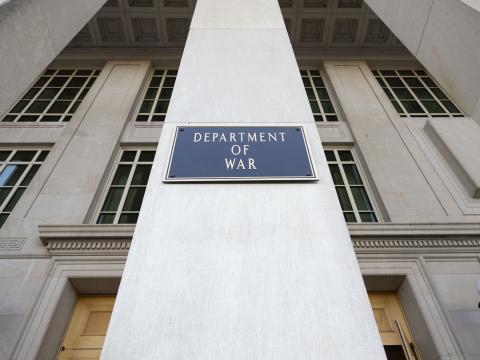West 2010 Online Show Daily: Information Is the New Sextant for a Networked Navy
But much remains to be done as the service adjusts to a new era.
All the chief of naval operations did on the last day of West 2010 was describe the future U.S. Navy and its top requirements. Adm. Gary Roughead, USN, told an overflow audience at the three-day event’s final luncheon that the Navy will be built around information, in both technology and practice.
“Our way forward must be centered on information and how we use it,” Adm. Roughead declared.
One of the key requirements of information is to protect it, and the admiral outlined plans for building a new career track of cyberspace experts. As many as 44,000 sailors are serving in this information group, and the Navy is creating billets for cyber warfare engineers to test computer network defense against software attack. The selection of these top-notch engineers will be similar to that of men and women of the nuclear power force, he noted. And, the Reserve component will serve as an important surge capability, with the Navy positioning some cyber centers near Reserve centers.
Adm. Roughead continued that information and intelligence are so inexorably linked that he decided to combine the two in the Navy. “We’re moving out in the area of information dominance,” he stated. “Last summer, I moved to combine our directorate of intelligence [N2] with the directorate of communications [N6]. I don’t take reorganizations lightly, but I was convinced this was the way to go.”
The admiral mentioned several key technologies that the Navy will need to maintain its supremacy in the information age. One is unmanned vehicles and systems, which are the key to moving information. The admiral noted that the Navy has deployed a vertical takeoff unmanned aerial vehicle (UAV) on a ship involved in counterdrug operations in the eastern Pacific Ocean. UAVs for aircraft carriers will make a big difference for Navy operations.
Unmanned underwater vehicles also will be vitally important, but Adm. Roughead warned that their current power limits curb their effectiveness. “All the underwater sensors in the world will be useless if they have to come out of the water every 24 hours,” he stated. “We need power, and we need it quickly.”
Being able to afford new technologies and systems always is a challenge for any service, but the Navy is facing a critical moment as it weighs needed modernization against increasing budgetary pressures. A panel on affordability waxed and waned on the Navy’s ability to realize its technology needs.
 |
| Panelists discussing the affordability of new Navy technologies include (l-r) Thomas Hone, Naval War College Liaison with OPNAV; Lou Von Thaer, corporate vice president, General Dynamics and president, General Dynamics Advanced Information Systems; Vice Adm. Jack Dorsett, USN, Adm. Roughead’s new N2/N6; Robert O. Work, undersecretary of the Navy; and panel moderator Richard Diamond Jr., strategic planner, Raytheon IDS Strategic Assessments. |
Thomas Hone, Naval War College Liaison with OPNAV, called for industrializing the production of software. “We don’t have software that can make software,” he observed, and he drew a historical parallel to how the automobile became ubiquitous after Henry Ford automated its construction to mass-produce millions. Great achievements can take place when software is mass-produced, he said.
Opening his remarks with references to some of the most well-known science fiction stories, Dr. Ralph W. Shrader, chairman, chief executive officer and president, Booz Allen Hamilton, stated his opinion about the qualities of a good leader and the importance of leading well. Shrader was the final morning speaker at WEST 2010, and he provided the audience with some powerful points to ponder whether they serve in the military or own a business.
 |
| Dr. Ralph W. Shrader, chairman, chief executive officer and president, Booz Allen Hamilton, discusses key tenets of leadership with attendees at Thursday’s breakfast. |
One example of the changes necessary to meet future challenges are the moves that are currently underway in the U.S. Navy. Shrader noted how Adm. Gary Roughead, USN, chief of naval operations, has taken the bold move to embrace the combination of soft power and hard power to attack not only today’s threats but tomorrow’s adversaries as well.
Shrader himself faced such a challenge when it became obvious that it was time to split Booz Allen Hamilton into two separate companies: one focused on private sector business, the other on the public sector. Corporate leaders saw this issue building and decided to take control rather than leaving the winds of fortune to make the decisions for them.




Comments